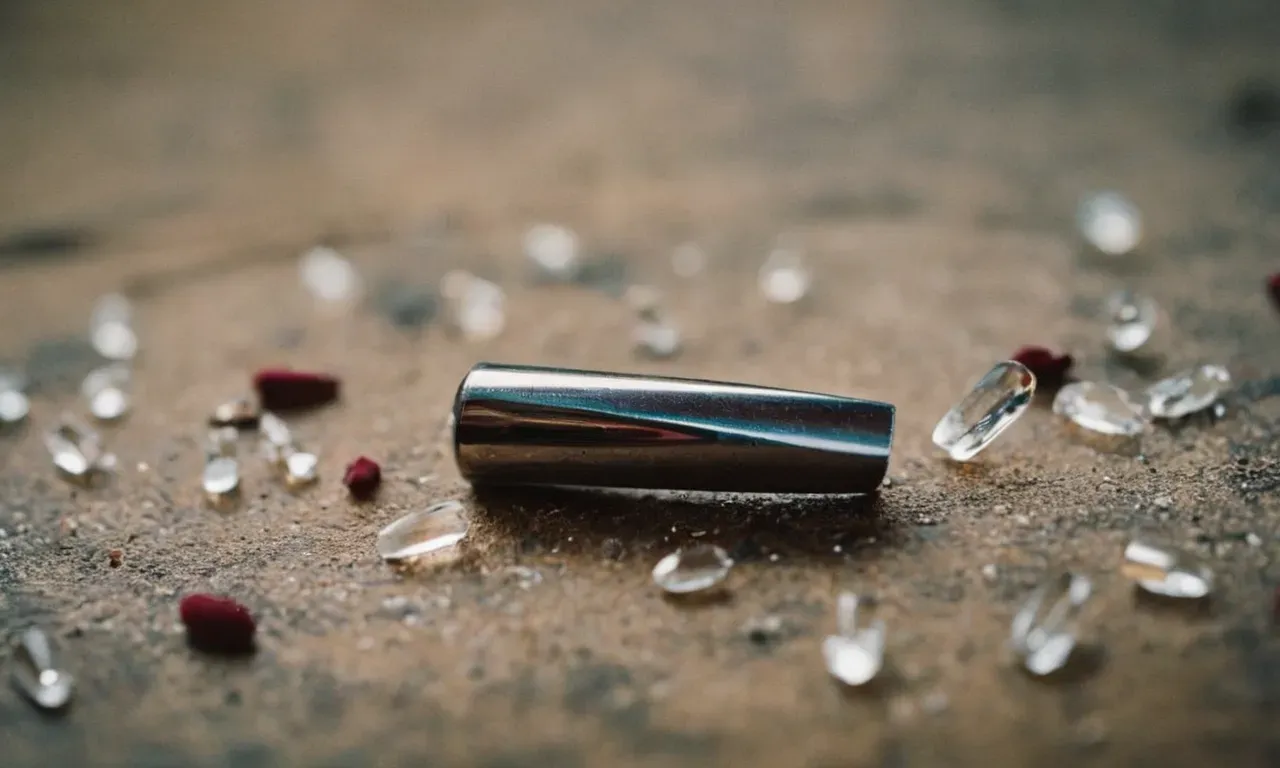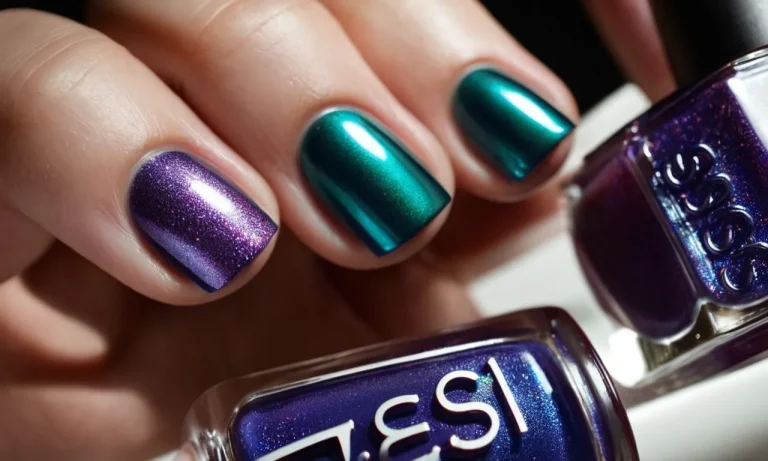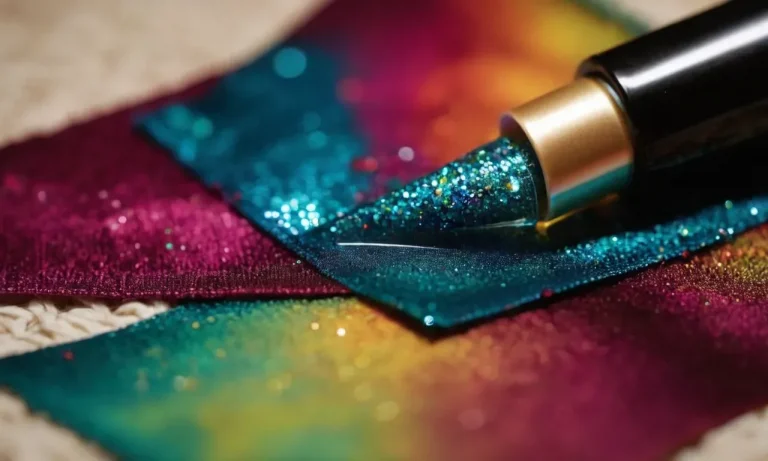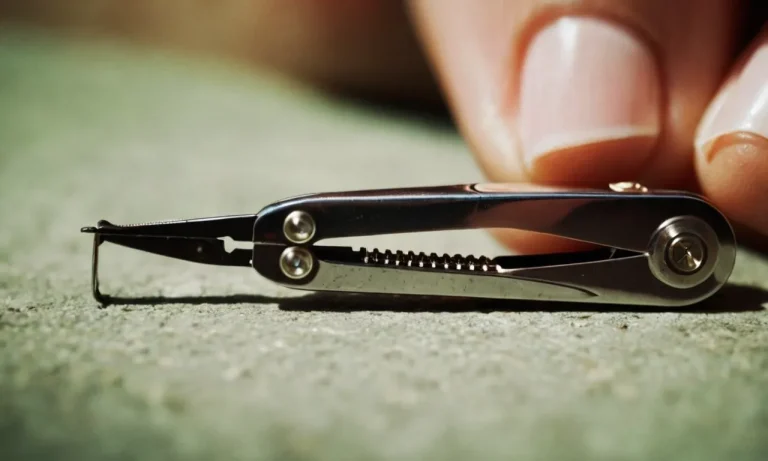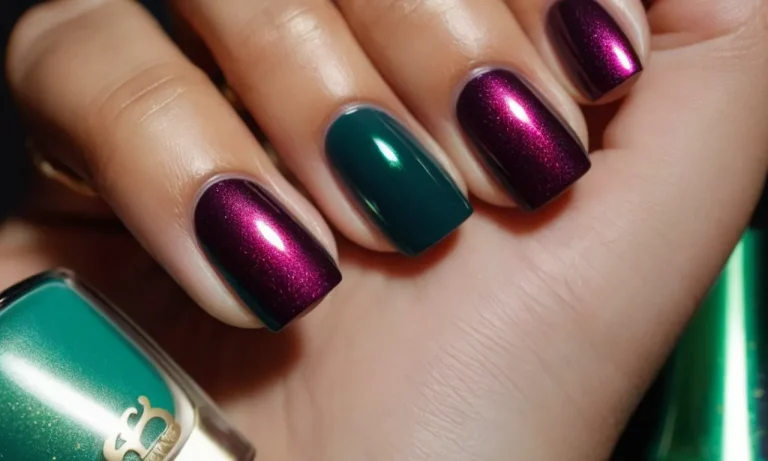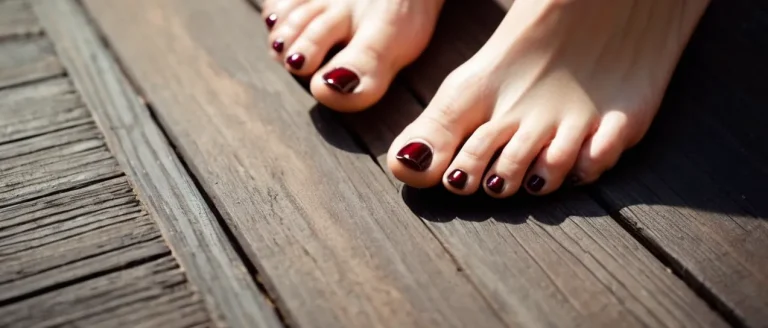What To Do When Your Acrylic Nail Rips Off Your Real Nail
Having an acrylic nail suddenly rip off can be painful, unsightly, and incredibly frustrating. If you’ve just had the misfortune of losing one of your acrylic nails, don’t panic. There are steps you can take to care for your exposed nail bed, repair the damage, and prevent your acrylics from popping off again.
If you’re short on time, here’s a quick answer to your question: Clean the nail bed gently with soap and water, apply antibiotic ointment, and avoid using your fingertips until the nail has reattached naturally or you can get to the salon for repairs.
Acrylics rip off when the bond weakens between the product and your real nail, so be sure to properly prep nails and care for acrylics to strengthen adhesion.
Assess the Damage and Disinfect the Nail
Look at the amount of real nail left exposed
When an acrylic nail rips off, it can take layers of your natural nail with it, leaving the nail bed exposed. Take a close look at the nail to see how much is missing. If you still have most of your natural nail intact, the nail bed may only have minor scrapes or cracks.
However, if a large layer of your real nail ripped off with the acrylic, the nail bed could be severely damaged.
It’s important to assess the amount of exposed nail bed. The more nail bed that is revealed, the higher the risk of infection. An antibiotic ointment will be vital to prevent bacteria from entering the nail bed.
A missing top layer also means the nail will be fragile and prone to further cracking or splitting until it can grow out.
Wash your hands and gently clean the nail bed
Before disinfecting the ripped nail, you need to thoroughly clean it. Use warm water and a mild soap to wash your hands. Avoid using harsh soaps, as they can further irritate the damaged nail bed. Carefully clean around and under the nail to remove any debris.
You can also soak the nail in a bowl of warm water with a tablespoon of Epsom salts added. This can help draw out any pus or fluid from the wound. Be very gentle when scrubbing or soaking the nail bed, as the exposed area will be sensitive.
Once cleaned, thoroughly dry the nail and surrounding skin with a clean towel. Proper cleaning reduces the amount of dirt or bacteria present so disinfectants can work effectively.
Apply antibiotic ointment to the exposed nail bed
After washing the nail, it’s crucial to apply an antibiotic ointment like Neosporin. This will prevent infection in the open wound left behind on your nail bed. Antibiotic creams create a protective barrier against bacteria.
Dab a thin layer of ointment over the entire nail, focusing on any cracks, tears or missing layers. Reapply the antibiotic 2-3 times a day until the nail has fully grown out. Keeping the nail bed lubricated promotes healing.
You can also apply an anti-fungal ointment if the nail bed appears discolored or infected. Fungi thrive in the warm, moist environment under nails. An over-the-counter anti-fungal cream can clear up any possible fungal overgrowth.
Finally, seal the entire nail with a breathable nail polish or glue. This keeps dirt and debris away while the nail mends. Change the polish every few days when you reapply antibiotic ointment. Once the nail has fully regrown, you can get a new acrylic nail professionally replaced if desired.
Be sure to care for the natural nail in the meantime.
Care for the Nail While It Heals
Avoid using your fingertips
When an acrylic nail rips off, it exposes the nail bed underneath, which can be sensitive and vulnerable to infection. To allow the nail bed to heal, it’s important to avoid using your fingertips for daily activities as much as possible.
This means avoiding typing, texting, opening doors and bottles, washing dishes, and other regular tasks that put pressure on the nail bed. If you must use your hands, try to use the sides of your fingers or knuckles instead of the tips.
You can also wear thin gloves to protect the nail while it recovers. Taking a break from harsh activities will help the nail bed heal faster.
Apply cuticle oil to hydrate the nail bed
Hydrating the nail bed is essential for healthy nail growth and recovery. When a fake nail rips off, the nail bed can become dry and brittle without its protective coating. Applying cuticle oil 2-3 times per day will help add moisture back and prevent cracking or infection.
Look for cuticle oils that contain nourishing ingredients like vitamin E, jojoba, and coconut oil. Gently rub a few drops into the nail and cuticles. This helps soften the skin around the nail and improves circulation to stimulate healing.
Consistent use of cuticle oil will get the nail back to its healthy state faster.
Cover with a bandage if needed for protection
If the ripped nail exposes a large tear or skin that is prone to snagging, applying a bandage can protect it from further damage. Choose a flexible bandage or fingertip cover that fits smoothly over the nail.
This prevents debris from getting stuck in the tear and cushions the nail when doing activities with your hands. Only leave the bandage on for 24 hours before removing it and cleaning the area to prevent moisture buildup. Then apply a fresh bandage if still needed for protection.
As the nail heals, you can leave it uncovered for longer periods. But having the option to cover it prevents unnecessary snags that would slow the healing process.
Reattach the Acrylic or Get a Refill
Use nail glue to re-adhere the popped off acrylic
If your acrylic nail pops off partially or fully, don’t panic! You can easily reattach it at home with some nail glue. Here are the steps:
- Clean the underside of the popped off acrylic nail and your natural nail bed with nail polish remover to remove any oils or debris.
- Apply a thin layer of nail glue (like Kiss Maximum Speed Nail Glue) to the underside of the acrylic nail.
- Firmly press the acrylic nail back into place on your natural nail, holding for 30 seconds to ensure proper adhesion.
- You can add a bit of glue around the edges as well to reinforce it.
- Allow the glue to fully dry before resuming normal activity with your hands to avoid popping the nail off again.
Nail glue provides a quick fix for popped off acrylics. Just make sure your natural nail bed is clean and glue it back on within a day to avoid your nails growing out too much underneath.
Visit your nail salon to get a refill/rebalance
If the entire acrylic nail pops off or you lose several on different fingers, it’s best to go see your nail technician for a refill or rebalance. Here’s what to expect:
- The nail tech will remove any remaining acrylic from your natural nails and trim and file them into the desired shape.
- They’ll apply new acrylic and sculpt your nails back into a cohesive, balanced look across both hands.
- A refill is typically cheaper than a full new set. Salon prices range from $30-$50 for acrylic refills.
- Getting them redone right away prevents your natural nails from growing out too far under the acrylics.
Seeing your nail tech ensures proper acrylic application and shaping. It also prevents excessive filing of the natural nails when reapplying acrylic at home.
Ask about nail prep and products to improve adhesion
If your acrylics are popping off repeatedly, ask your nail tech about these troubleshooting tips for better adhesion:
- Ask about using a nail primer before acrylic application. Primers help acrylic adhere better to natural nails.
- Inquire about using a different acrylic powder polymer. Some polymers adhere better than others.
- See if thinner acrylic or forms would help. Thick, heavy acrylic is more prone to popping off.
- Avoid water exposure when possible the first 24 hours after a fill to allow full curing and prevent lifting.
Open communication with your nail tech allows you to find the best acrylic products and techniques for your unique nail chemistry and lifestyle. With their help, you can troubleshoot factors causing lifting and enjoy long-lasting, beautiful acrylic nails.
Strengthen Nails and Prevent Lifting
Use gel or silk wraps under acrylics
Applying gel or silk wraps underneath acrylic nails can help reinforce the natural nail and prevent lifting. The gel or silk wraps act as a protective barrier between the natural nail and the acrylic overlay.
This helps distribute stress more evenly across the nail plate when pressure is applied, making lifting less likely (1). Using wraps can be especially helpful for those with naturally thin or weak nails. However, they do add slightly to the cost and application time of the acrylic service.
Avoid overfiling natural nails
It’s important not to overfile the natural nail surface when preparing for acrylic application. Excessive filing can thin and weaken the natural nails, causing lifting problems. Filing should only be done lightly to rough up the surface for better acrylic adhesion.
The nail plate should never be filed to the point of discomfort or pain. Overfiling can also increase the risk of infection if the protective nail layers are removed.
Allow nails to fully dry between coats
When applying acrylic powder and liquid, waiting until each layer or “coat” is fully dry before adding the next is crucial. Rushing the process by adding more acrylic too soon can lead to improper bonding.
This makes it easier for lifting to occur, as the acrylic is not strongly attached to the natural nail. As a general rule, most technicians recommend waiting 2 minutes between coats to allow for thorough drying (2).
Balance nail enhancement thickness
Maintaining an appropriate thickness when applying acrylic nail enhancements can help prevent lifting issues. Nails that are too thick place excessive pressure on the natural nail. This can cause the enhancement to pull away from the nail plate over time.
According to industry standards, the total thickness of the natural nail plus enhancement should not exceed 4mm (3). Keeping heavy embellishments or designs closer to the cuticle area can also help reduce pressure on the free edge.
By taking preventative measures like using protective wraps, avoiding overfiling, allowing adequate drying time, and keeping thickness balanced, acrylic nail users can strengthen the nail plate and lower the chances of bothersome lifting problems.
References:
- https://www.nailcarehq.com/acrylic-nails-lifting
- https://www.byrdie.com/how-long-between-acrylic-nail-coats
- https://www.nailtech.org/bbs/competitors/minimum-thickness.html
Know When to Give Nails a Rest
Allow nails to recover after excessive lifting
When removing acrylic or gel polish, it’s vital to avoid pulling directly up on the nail itself. This can cause the layers of the real nail to separate, resulting in a painful injury. If you notice your natural nails have sustained damage from excessive lifting and pulling, it’s wise to give them a break under regular polish or with no polish at all for 2-4 weeks.
This allows the layers to fully reattach and heal.
You can also apply a nourishing treatment like coconut oil, vitamin E, or an intensive nail repair serum daily to help restore strength and moisture. Avoid using your nails as tools to pick or pry during the healing phase. Give those tips and cuticles a rest!
Give nails a break every 2-3 months
Getting acrylic or hard gel enhancements repeatedly with no break can starve nails of moisture and weaken the natural nail over time. That’s why professionals recommend taking a short 2 week break between sets every 2-3 months if you continually wear acrylics or hard gels.
This breathing room allows moisture to reach the natural nails so they don’t become dry and brittle. You can maintain polish by using regular or peel-off lacquers during break periods. Just avoid excessive water exposure and nail tools. Give those tips a mini-vacation!
Moisturize and strengthen nails in between acrylics
Between salon visits, be diligent about hydrating and protecting natural nails, especially if wearing lengthy sets. Apply cuticle oil 1-2 times daily and massage into the nail bed. Shea butter and petroleum jelly also seal in moisture.
You can even sleep with cotton gloves on after applying intensive creams.
For added defense against breakage, use a clear or sheer strengthening base coat underneath gel or traditional polish. Top it off with a protective top coat. This supplements the acrylic or gel enhancement without overdrying nails. Keep free edges smooth by properly shaping them as they grow out.
By regularly nourishing and shielding the natural nail, you help prevent cracks and tears which lead to inconvenient breaks. Give those cuticles and nail beds some TLC between sets!
Conclusion
Losing an acrylic nail can be annoying and uncomfortable. With proper care of the exposed nail bed and surrounding skin, the nail can reattach naturally over time as it grows out. For immediate repair, visit your nail technician to have the acrylic reapplied.
Be sure to let your natural nails rest periodically, and follow prep and aftercare steps to prevent lifting and keep your enhancements looking beautiful.

